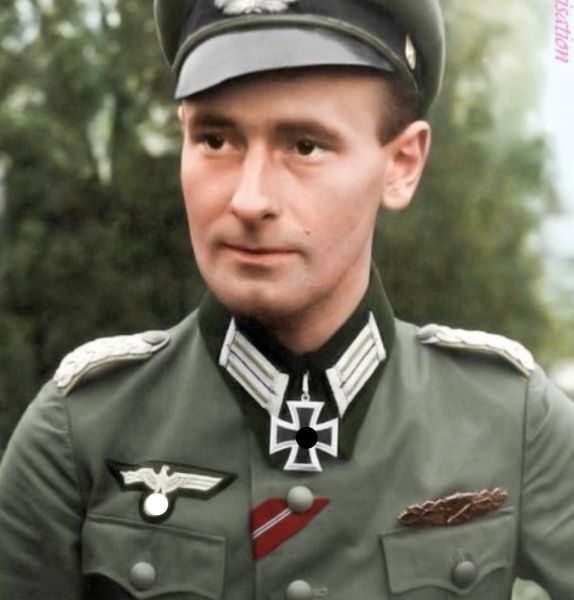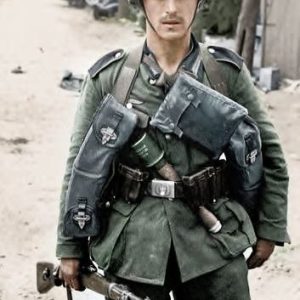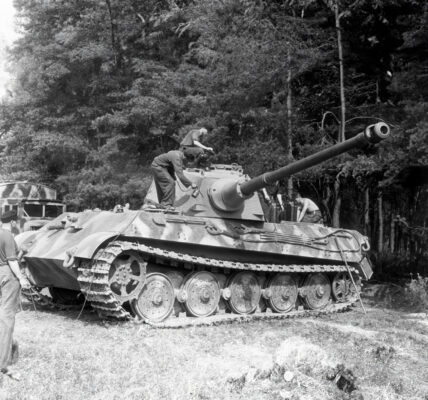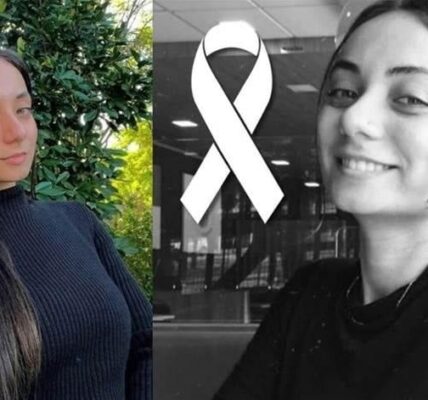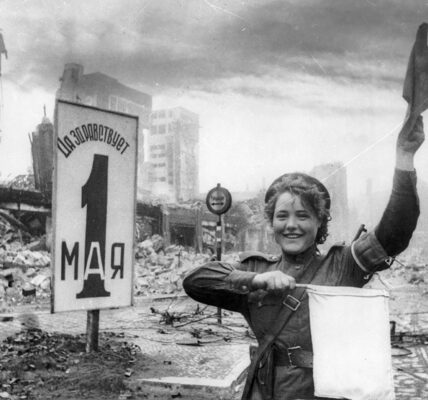
In the photo: Major Heinrich Ruhl, awarded the Knight’s Cross of the Iron Cross.
(In the photograph: Major Heinrich Ruhl, who received the Knight’s Cross of the Iron Cross – one of the highest military awards in Nazi Germany for gallantry at the front or outstanding military leadership.)
Awards:
German Cross in Gold
(A high military award for repeated exceptional bravery or outstanding military leadership, below the Knight’s Cross.)
Iron Cross 2nd Class
(A military gallantry award, awarded for individual acts of gallantry or military leadership.)
Iron Cross 1st Class
(Higher grade of the Iron Cross, awarded for continued gallantry or leadership.)
Wound Badge
(Awarded to soldiers wounded in combat. Black, silver, or gold depending on the number and severity of the wounds.)
Close Combat Clasp
(A badge for fighters who have participated in close combat, typically in silver or gold according to the number of days of close combat.)
Medal for the Winter Battle of the East 1941/42
(also called the “Eastern Medal”; awarded to soldiers who fought under extreme conditions on the Eastern Front in the winter of 1941/42.)
General Assault Badge
(A badge for soldiers who participated in infantry attacks but did not belong to a specific branch of service.)

In the photo, German soldiers on the Eastern Front are greeted with flowers by the Ukrainian population.
(The scene shows a friendly greeting by civilians during the advance into Soviet territory.)
The soldier on the right is wearing something resembling a flashlight—a so-called magnetic lamp .
(A magnetic lamp was a battery-free lamp that generated electricity by operating a lever and was primarily used by the Wehrmacht.)

A German soldier poses for a photo while on guard duty on the famous Legion Bridge in Prague (1939).
(The Legion Bridge – “Most Legií” – is a historic bridge in Prague, named after the Czechoslovak Legions. In 1939, Prague was controlled by German troops during the occupation of Czechoslovakia.)

In the photo: Three solemn German soldiers before their march to the Battle of France (1940).
(In 1940, Germany began the Western Campaign against France and the Benelux countries.)
In the foreground is the Kar 98k rifle.
(The Karabiner 98k was the standard issue rifle of the German Wehrmacht—a repeating rifle with high precision and reliability.)

In the photo: A German soldier in a resting position during a ceremony in Berlin (1940).
(“Rest position” refers to a soldier’s relaxed posture, with the rifle lowered and a less stern bearing—typical for formal occasions such as parades or ceremonies.)

General Heinz Guderian in his command vehicle during the Battle of France (1940).
(Heinz Guderian was a German general and pioneer of tank warfare, known for his Blitzkrieg tactics.)
You can see the legendary Enigma machine.
(The Enigma was a famous cipher machine used by the Wehrmacht to encrypt military messages.)

Pictured here: Gebirgsjäger (German mountain soldiers) during a short break during an exercise.
(Gebirgsjäger were specialized Wehrmacht troops trained for combat in difficult terrain such as mountains and snow.)
It can be seen that they are armed with the Gewehr 98k.
(The Karabiner 98k was the Wehrmacht’s standard issue rifle—a reliable repeating rifle, ideal for a wide variety of combat situations.)

In the photo, a Panzer II tank, along with motorized units, advances toward the Meuse River during the Battle of France (1940).
(The Meuse—in Spanish, “Río Mosa”—was a strategically important river during the German Western Campaign.)
